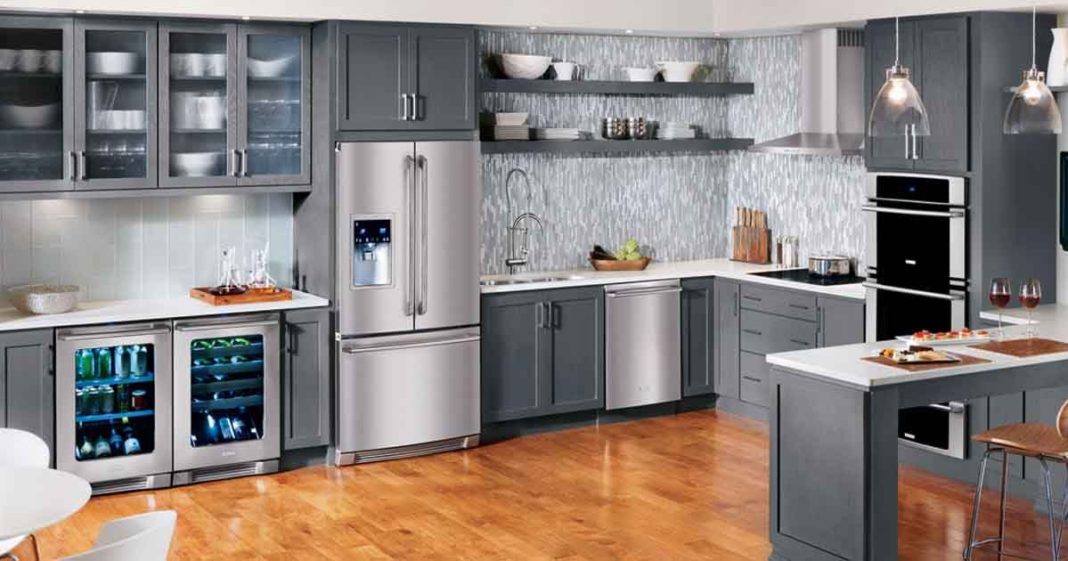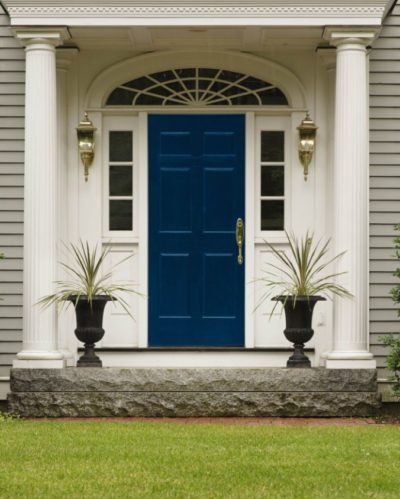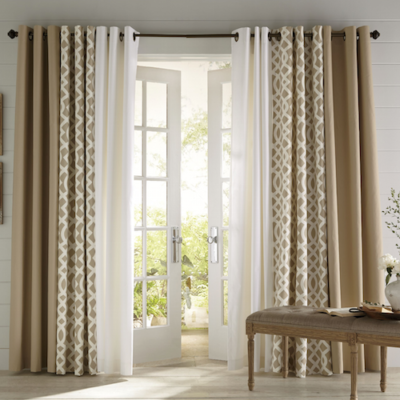Some home design upgrades are aesthetic, and others are for function. These ideas, all with better home safety in mind, so there’s no reason you can’t have both.
If you tend to think of home safety in strictly functional terms, you may be relieved to know you don’t have to abandon your designer sensibilities when it comes to improving your home’s overall safety. In fact, these tips from the home decorating experts at JCPenney show just how easy it can be to make safe look sensational.
Appliances
Outdated appliances aren’t just an eyesore and drain on your home’s energy resources; they can actually be dangerous. Over time, electrical components and other mechanical functions can wear down, which may result in a higher risk of fire or water damage. A new suite of appliances can give a tired kitchen an instant facelift, and with the wide range of options available, you can create just about any look you desire, from an ultra-modern sleek motif to a farm-style design that blends modern convenience with yesteryear charm.
If replacing your home appliances isn’t in the budget, it’s important to ensure they’re being properly maintained. This applies to the kitchen, of course, but also other appliances throughout the house, such as the climate control system, water heater and water filtration system. Regularly cleaning and assessing operations can help you keep on top of potential concerns. Also keep up on regular service schedules so an expert can evaluate problems that may not be immediately apparent and ensure that your appliances are operating at peak efficiency.
Doors
An attractive, inviting door is an important element of your home’s exterior facade, but it’s also an important safety feature. For the door itself, a solid wood door is both aesthetically pleasing and functionally sound, but if your budget can stand it, steel is even better. Avoid pretty window panes that can be easily broken, giving access to the locks. Be sure the frame is in good order, as well, as even the sturdiest door can be forced off a weak, rotted or poorly installed frame.
A deadbolt that extends at least an inch into the doorframe is a basic must. It’s also a good idea to forgo the push-button knobs and opt instead for a more secure keyed doorknob, which is more difficult for an intruder to manipulate. Be sure to remember that the same principals apply to every entry point to the house, and not just the front door.
Window Treatments That Work
There are a wide range of window treatments available today, including blinds, draperies, valances and shades. With more than 9,000 unique patterns and colors, plus countless more textures and materials available, look for window treatments that are attractive, well-constructed and suited to transform nearly any window into a functional and inspirational view.
Style
Many window treatments serve dual purposes, such as adding visual beauty while controlling light flow, which can greatly impact the overall feel of the room. Treatments with a horizontal orientation create a casual feel, while a vertical orientation adds height and stature. Treatments with patterns or diagonal lines draw attention to the window, but they can be distracting if not defined by another style element.
Color
Warm colors like reds and oranges can be used to make a room feel cozier, while greens and blues can make a room feel cooler. Colors that contrast with your walls can be used to fill the space in a room while other colors can be selected to blend with the walls. The amount of natural light in a room also plays into color selection, as changing light alters the colors’ appearance throughout the day.
Texture
The material can also factor into the overall look and feel of the room, ranging from more formal to more casual. Patterns or shapes can create depth and invoke a feeling of formality or fun.
Cords
A new window covering safety standard by the American National Standards Institute requires a vast majority of window covering products sold in the United States to be cordless or have inaccessible or short cords. By early 2019, corded window coverings will only be available on custom-order products, as corded products are still needed by a wide range of consumers, including the elderly and those with disabilities, those short in stature and those with windows in hard-to-reach locations.
Fit to the Room
Symmetry and balance are important considerations. Heavy treatments can overpower a space, while treatments that are too light can blend in or get lost. Simple treatments are typically used in smaller rooms, while more ornate treatments are best for larger spaces. Put simply, you’ll need to decide whether you want the window treatments to be a focal point or accent.
Start planning upgrades to your home’s safety at jcpenney.com.













